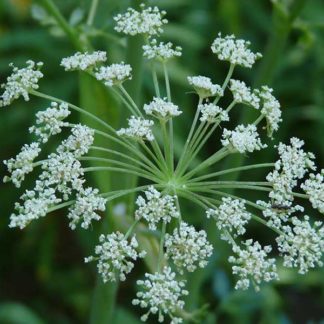invasive
Showing 1–12 of 42 results
-

Alyssum desertorum / desert madwort
- short crucifer with teeny leaves, no basal rosettes
- short inflorescence with numerous teeny yellow flowers... short-lived
- seed capsules mature by mid-July, ca. 40/stalk
- disturbed sites of any kind
- often in dense populations
-

Amaranthus retroflexus / pigweed
- green bottle-brush inflorescence
- accomplished weed on disturbed sites (including road & driveway cracks)
- often in gardens, farm fields (edges), roadsides
-

Arctium minus / lesser burdock
- purple to pink to lavender thistle-like flowers with hooked bracts
- nasty hooked seed heads
- very large, heart-shaped leaves
- found in a wide variety of disturbed areas
-

Barbarea vulgaris / yellow rocket
- showy yellow brassica with relatively large flowers
- leaves deeply lobed with larger terminal lobe, smaller toward top of stems
- common on roadsides and waste places in spring
- siliques about an inch long and curving upward, with beaks and pedicels
-

Bassia scoparia / burningbush
- large, annual herb (forb)
- leaves long-ish and narrow
- inflorescence a highly branched spike with teeny green/yellow flowers
- may form huge, invasive colonies
- whole plant turns red in fall
- a tumbleweed
- especially in disturbed areas and wastelands in the Valley
-

Beteroa incana / hoary alyssum
- dense clusters of teeny white flowers
- 4 petals, each with a notch
- fruit is a short, fat-ish seed pod (silicle)
- found in pastures and all manner of disturbed habitats
- toxic to horses
-

Bromus inermis / smooth brome
- clump forming grass but clonally spreading
- erect, leafy
- in winter, leaves curl up (like ribbon)
- florescence is a nodding panicle, standing well above leaves
- spikelets bronze/purple at maturity; anthers yellow
-

Bromus tectorum / cheatgrass
- short bunchgrass, 2 to 30 in at floweirng
- panicle with all florets to one side; long awns
- early season growth, flowering, seed drop
- florets green, turning purple as seeds mature
- highly invasive!
-

Centaurea maculosa / spotted knapweed
- "vibrant" pink flowers
- dark tips on the sepals ("bud scales") - the "spotted" in the name
- biennial - rosette of leaves in first year
- officially a noxious weed
-

Cicuta douglasii / water hemlock
- HIGHLY TOXIC
- primarily on continuously wet soils, e.g. ditches, stream banks, pond margins, marshes.
- white compound umbel inflorescence typical of the Apiaceae/Umbelliferae
- multiply compound leaves with prominent veins ending in notches between lobes
-

Cirsium arvense / Canada thistle
- purple or lavender clearly-thistle flower heads
- multiple small flower heads per stem
- deeply lobed, spiny leaves, but stems not spiny
- clonal and perennial
- in clumps or along roads, sometimes quite large/long
-

Convulvulus arvensis / field bindweed
- prostrate and twining vine with white "morning-glory" flowers
- may be so dense as to choke out other plants
- roadsides, agricultural fields, waste areas
- "noxious" in Idaho
Showing 1–12 of 42 results